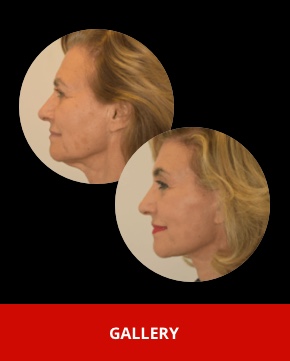Male vs female facelift
Performing a facelift on a male patient differs from a female patient in several important ways due to anatomical, aesthetic, and social considerations. Here are the key differences:
Anatomical Differences
- Skin Thickness and Texture:
- Male: Generally, men have thicker and more vascular skin, which can affect healing and the extent of lifting required.
- Female: Women’s skin is typically thinner and may respond differently to lifting and tightening.
- Facial Hair:
- Male: Presence of beard and mustache areas require careful handling to avoid distorting hair growth patterns. Incisions around the ears must be placed to preserve natural hairline and beard patterns.
- Female: Incision placement is less complicated by facial hair, although hairline considerations are still important.
- Bone Structure:
- Male: Men often have more pronounced bone structure, including a stronger jawline and brow, which influences the surgical approach.
- Female: Women’s bone structure is typically softer and may require different techniques to enhance natural contours.
- Neck Anatomy:
- Male: Men may have a more prominent Adam’s apple and thicker neck muscles, requiring a tailored approach to neck lifting.
- Female: The neck anatomy tends to be less bulky, which can affect the extent and technique of neck lifting.
Aesthetic Differences
- Goals and Expectations:
- Male: Men typically seek a more subtle, natural-looking rejuvenation without feminising features. The goal is to achieve a refreshed, youthful appearance while maintaining a masculine look.
- Female: Women may desire more pronounced lifting and contouring to achieve a youthful, more defined appearance.
- Incision Placement:
- Male: Incisions need to be placed to avoid disrupting facial hair patterns and to ensure that scars are well hidden within natural creases and hairlines.
- Female: Incisions are placed to follow natural skin folds and hairlines, with a focus on minimising visible scarring.
- Degree of Lifting:
- Male: Men may prefer less aggressive lifting to avoid an overdone look and to maintain a more natural appearance.
- Female: Women may seek more comprehensive lifting to achieve a smoother and more youthful look.
Social and Psychological Considerations
- Perceptions and Acceptance:
- Male: Men may be more concerned about the stigma associated with cosmetic surgery and prefer less noticeable changes. They often seek subtle improvements that do not drastically alter their appearance.
- Female: Women may be more open about cosmetic procedures and may seek more noticeable changes that enhance their facial features.
- Recovery and Downtime:
- Male: Men may have different concerns about downtime and recovery, often wanting a quicker return to normal activities without visible signs of surgery.
- Female: Women may be more accustomed to makeup and other means to camouflage post-operative signs during recovery.
Surgical Technique Adjustments
- Incision Technique:
- Careful planning is needed to ensure incisions are hidden within natural facial lines and hair patterns, especially for men with facial hair.
- Skin and Tissue Handling:
- Adjustments in the amount of skin and tissue lifted and repositioned, considering the thicker skin and different vascularity in men.
- Contour and Definition:
- Techniques are tailored to enhance masculine features such as a strong jawline while avoiding feminizing effects.
- Post-operative Care:
- Tailored advice on how to manage facial hair during the healing process, ensuring natural regrowth patterns.
Summary
In summary, a facelift in a male patient requires careful consideration of anatomical differences, aesthetic goals, and social perceptions. The approach is customised to achieve natural, masculine results while addressing the unique challenges presented by male facial anatomy. A thorough consultation with a surgeon experienced in male facelifts is essential to plan and execute the procedure effectively. Dr Roth generally recommends the extended deep plane facelift for male patients.


